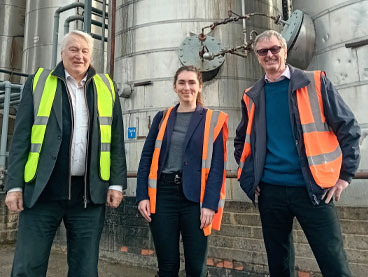Sub-Acute Rumen Acidosis (SARA) is most commonly associated with cows on winter diets, but as Joe Magadi, UFAC-UK Technical Manager explains it can have a significant impact on performance at grass too.
Don’t let SARA reduce grazing performance
Sub-Acute Rumen Acidosis (SARA) is most commonly associated with cows on winter diets, but as Joe Magadi, UFAC-UK Technical Manager explains it can have a significant impact on performance at grass too.
Turnout is often seen as the time when the feeder wagon can be put away, concentrate feed rates can be reduced and cows can be expected to produce more milk from forage. This will be particularly important this year with reduced milk incomes.
However, it is still important to follow the key rules about providing and maintaining a healthy rumen. Many of the changes in feeding at turnout can compromise rumen health, meaning cows do not make the most of grazing.
Spring grass is in many ways, far from the ideal feed for dairy cows. It is high in rapidly fermented carbohydrates which can cause a fall in rumen pH. At the same time it is short in the fibre essential for optimal rumen function.
Together these predispose cows to SARA. At the same time, the switch to feeding more compounds rather than a TMR can increase the supply of rapidly fermented carbohydrate, and even so called HDF compounds do not supply physical fibre.
Avoid production loses
The symptoms of SARA in grazing cows will be the same as housed animals, as will the consequences. It is estimated that production losses due to SARA average 2.7 litres/day reduction in milk yield, 0.3 percentage point reduction in butterfat and a 0.12 percentage point reduction in milk protein. Combined these will reduce total milk income and margins at a time when it should be possible to optimise margin per cow per day.
Dairy farmers looking to exploit the full potential of grazed grass will take steps to ensure losses resulting from SARA are reduced. A key management action will be to continue buffer feeding to allow rapidly fermented carbohydrates to be balanced and to ensure cows have access to sufficient physical fibre.
In addition, it will be important to continue to feed an effective rumen buffer to help reduce rumen acid load and avoid the conditions which predispose cows to SARA. Diets also need to contain sufficient supplies of glucose to fuel the liver to increase lactose production which in turn drive milk yield. A failure to do this can result in excessive mobilisation of body condition which can have a negative impact on fertility.
Glyco-Buf from UFAC-UK is a proven nutritional buffer to help increase rumen pH, combined with an effective source of glucose. The combination of increased glucose supply and improved rumen health can have a significant impact on performance.
In a farm trial in south Wales, the addition of Glyco-Buf had a positive impact on all the key parameters affecting financial returns (see table). Supplemented cows increased total dry matter intakes, consuming more forage and less concentrates, so reducing feed costs per litre. The cows produced 9% more milk with 5% higher fat and 1.9% more protein, increasing milk incomes.
With the focus on making full use of grazing, paying close attention to rumen health will be the foundation to a successful summer.


 Back to News
Back to News 



